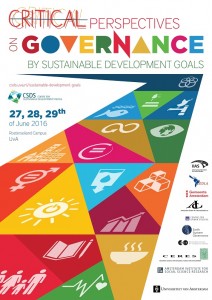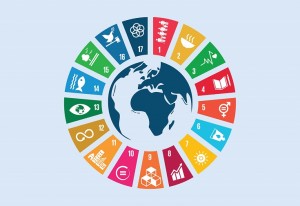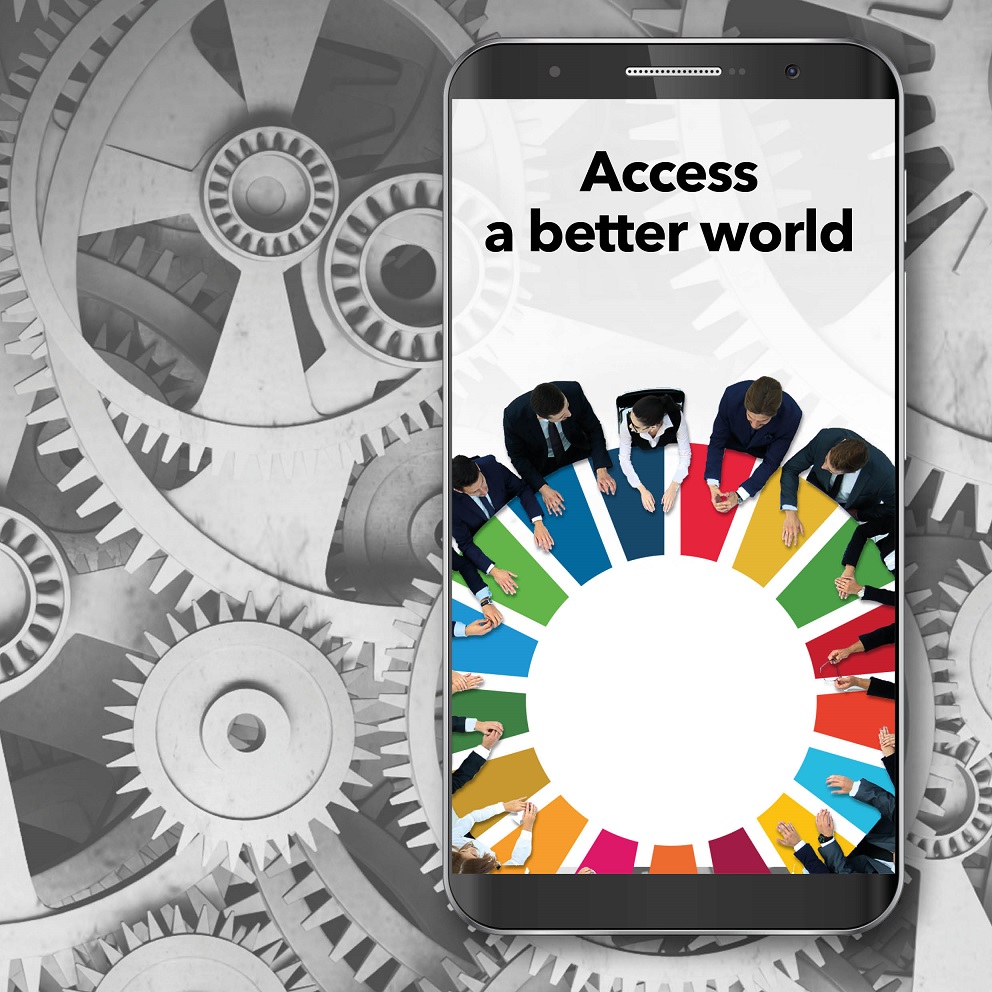Covid-19 and SDGS It’s time to recalibrate the goals
This year has exposed the world’s extraordinary fragility. Managing a pandemic is hard enough. Doing so while addressing other urgent stresses—like inequality, violence, and climate change—adds to the degree of difficulty. What should, then, be done to move forward? The answer lies in recalibrating the Sustainable Development Goals (SDGs) as Covid-19 and related crises have made these goals even more important. The goals offer a “North Star” to help steer longer-horizon efforts out of crisis. But the shifting global context requires a new outlook.
The Sustainable Development Goals (SDGs) seek to guide global action to address many of the world’s greatest challenges such as eradicating poverty, eliminating hunger, expanding access to education, achieving gender equality and addressing the climate crisis. At a time when the world is witnessing the worst economic fallout due to Covid-19 pandemic—since the Great Depression—the 2030 Agenda for Sustainable Development has been shaken to its very core. The crisis has touched all segments of the population, all sectors of the economy, and all areas of the world. Not surprisingly, it has not only exposed but exacerbated harsh and profound inequalities within and among countries—turning back decades of progress. What little progress had been made has been stopped in its tracks.
SDG 1: No poverty
The UN’s 2020 report on the SDGs reveals that even before Covid-19, baseline projections suggested that 6 percent of the global population would still be living in extreme poverty in 2030, missing the target of ending poverty. According to “The 2020 Atlas of Sustainable Development Goals,” published by World Bank, the economic effects of Covid-19 may have pushed more than 100 million more people into extreme poverty—the first significant increase in this measure in decades. The report further says, “Reliably predicting the future of poverty in any particular country is impossible, but without dramatic accelerations in poverty reduction, extreme poverty will linger in many countries well beyond 2030.” If poverty reduction trends remain unchanged—based on a linear trend over 20 years—some countries will take decades to eliminate extreme poverty.
SDG 2: Zero hunger
An estimated 25.9 percent of the global population – around 2 billion people – has been affected by moderate or severe food insecurity in 2019, an increase from 22.4 percent in 2014. At the global level, hunger and food insecurity have been on the rise, and malnutrition still affects millions of children. Today, one in four persons around the world experiences moderate or severe food insecurity, and one in 11 severe food insecurity.
Ending hunger entails ending chronic undernourishment (SDG target 2.1) which is closely associated with severe food insecurity. The State of Food Security and Nutrition 2020 report estimates an additional 80-130 million people may become undernourished in 2020 depending on the extent of economic shocks across countries. Globally, undernourishment is expected to rise sharply due to the Covid-19 pandemic.
SDG 3: Good health and well-being
SDG 3 is the most obvious casualty. Until the end of 2019, advances in many areas of health continued, but the rate of progress was not sufficient to meet most SDG 3 targets. In 2020, childhood vaccination programs have stalled in 70 countries with hundreds of thousands of additional under-5 deaths expected along with tens of thousands of additional maternal deaths. Moreover, the fast spread of the novel coronavirus has put severe pressure on health systems in many countries and has drawn attention to both the strengths and the weaknesses in health care, including in high-income countries. Pressures on health system resources and delays caused by logistical challenges are projected to lead to substantial setbacks in key SDG health indicators, including child and maternal mortality rates, immunization rates, tuberculosis incidence, and HIV prevalence. The Covid-19 pandemic has highlighted the need for rapid and efficient ways to develop and implement vaccination programs, starting with the most vulnerable populations.
SDG 4: Quality education
In 2020, as Covid-19 spreads across the globe, more than 190 countries have implemented nationwide school closures. About 90 percent of all students (1.57 billion) were out of school. Although distance-learning solutions are provided in four out of five countries with school closures, at least 500 million children and youth are currently excluded from these options. The sheer magnitude of school closures is likely to set back progress on access to education. Prior to the Covid-19 pandemic, the world was not on track to meet the SDG 4 targets, and the Covid-19 pandemic has further disrupted progress.
SDG 5: Gender equality
The coronavirus pandemic lockdowns are intensifying the risk of violence against women and girls, setting back progress to end child marriage and female genital mutilation, and laying more burden of unpaid work on women. Cases of domestic violence have increased by 30 percent in some countries. Since the outbreak of Covid-19, emerging data and reports from those on the front lines have shown that all types of violence against women and girls, particularly domestic violence, have intensified. The United Nations has called it a “Shadow pandemic”. As Covid-19 cases continue to strain health services, essential services, such as domestic violence shelters and helplines, have reached capacity. More needs to be done to prioritize addressing violence against women in Covid-19 response and recovery efforts.
SDG 6: Clean water and sanitation
The pandemic has brought to the fore the critical importance of water, sanitation and hygiene for protecting human health. Access to drinking water and sanitation is a fundamental human right. Achieving universal, adequate and equitable access to safely -managed water and sanitation services is at the core of sustainable development. This is reflected in SDG 6. The importance of good hygiene through hand-washing and access to clean water has been further highlighted by the Covid-19 pandemic. Despite progress over the past few decades, billions of people worldwide still lack access to clean water and sanitation. An estimate suggests that as many as 3 billion people worldwide lack basic hand washing facilities at home – the most effective method for Covid-19 prevention. Unless current rates of progress increase substantially, Goal 6 targets will not be met by 2030.
SDG 7: Affordable, clean energy
SDG 7 recognizes that expanding access to electricity and other forms of energy is fundamental to improving people’s lives and communities. It aims for efficient energy use and the promotion of renewable sources of energy. The Covid-19 is also highlighting the urgent need for affordable and reliable energy—for hospitals and health facilities to treat patients, for communities to pump clean water and access vital information, and for out-of-school children to learn remotely. At the same time, the crisis is certain to stymie efforts towards Goal 7. Disruptions in supply chains could wreak havoc on energy services, and reduced incomes could limit people’s ability to pay for those.
SDG 8: Decent work and economic growth
SDG 8 aims to promote economic growth and promote decent work for all. Economies grow when more workers have access to jobs and when workers are more productive. The Covid-19 pandemic has considerably impacted employment opportunities in countries around the world. Even before the pandemic, economic growth in LDCs, while rapid, failed to approach the 7 percent target. The steady rise in global labour productivity observed since 2000 may falter in the face of the coronavirus crisis.
SDG 9: Industry, Innovation & Infrastructure
Equal access to reliable transportation is necessary for development and is a key to equitable and sustained growth. It brings education, health services and jobs within reach of all communities, expands access to local, regional and global markets, and helps reduce poverty. To support economic development, SDG 9 focuses on high-quality, reliable, sustainable and resilient regional and trans-border infrastructure. Over the past few decades the pace of global travel has accelerated, and the movement of people and goods has made the world increasingly interconnected. Globally, journeys by air passengers increased from 1.7 billion in 2000 to more than 4.2 billion in 2018. Then, the Covid-19 pandemic resulted in an abrupt decline in travel worldwide. Air traffic has been severely affected, and the pace of recovery remains uncertain. Overall, it threatens to halt or even reverse progress towards SDG 9.
SDG 10: Reducing inequalities
Inequality pervades the modern world, both within and across countries, and in terms of resources and opportunities. SDG 10 seeks to address these disparities in both economic and non-economic spheres. Despite some positive signs, e.g. lower income inequality in some countries and preferential trade status for lower-income countries, inequality in its various forms persists. The Covid-19 crisis is making inequality worse. Global recession could squeeze development aid to developing countries thus putting pressure on development resources and consequently on SDG 10.
SDG 11: Sustainable cities & communities
Of the global urban population of 4.2 billion, 60 percent—2.6 billion people—reside in large cities with more than 300,000 people. That number is projected to increase to 3.3 billion by 2035. The number of these large cities has grown from 355 in 1955 to 1,861 today. Even before the coronavirus, rapid urbanization meant that 4 billion people in the world’s cities faced worsening air pollution, inadequate infrastructure and services, and unplanned urban sprawl. Over 90% of Covid-19, cases are occurring in urban areas—potentially wiping out any recent gains in SDG 11. To achieve this SDG, cities will have to execute aggressive strategies and partner with rural areas to reduce air pollution across municipal divides. Examples from China show that change is possible.
SDG 12: Responsible consumption & production
SDG 12 recognizes that long-term development and economic growth depend on changing how we produce and consume goods. It demands more efficient and environmentally friendly management of materials across the lifecycle, through production, consumption and disposal. Consumption and production drive the global economy, but also wreak havoc on planetary health through the unsustainable use of natural resources. The global material footprint is increasing faster than population growth and economic output.
SDG 13: Climate action
Climate change threatens to undermine progress in nearly every area of human development. It poses substantial risks to food production, water supplies, ecosystems, energy security and infrastructure. By 2050, more than 140 million people may be forced to migrate within national borders in order to avoid its worst effects.
The year 2019 was the second warmest on record and the end of the warmest decade (2010–2019), bringing with it massive wildfires, hurricanes, droughts, floods and other climate disasters across continents. Global temperatures are on track to rise as much as 3.2°C by the end of the century. To meet the 1.5°C – or even the 2°C – maximum target called for in the Paris Agreement, greenhouse gas emissions must begin falling by 7.6 percent each year starting in 2020. However, despite the drastic reduction in human activity due to the Covid-19 crisis, the resulting 6 percent drop in emissions projected for 2020 falls short of Goal 13, and emissions are expected to rise as restrictions are lifted. The world is also falling short on 2020 targets to halt biodiversity loss. Two billion hectares of land on Earth have been degraded, affecting some 3.2 billion people, driving species to extinction and intensifying climate change.
SDG 14: Life below water
Fish are crucial to the functioning of ecosystems as well as for human livelihoods and nourishment. Marine fish are the primary food source for approximately 1 billion people and marine fisheries employ about 60 million people. Fish and other aquatic species are particularly vulnerable to threats from human activities, and aquatic species face much higher rates of extinction than terrestrial species such as birds and mammals. Today, 40 percent of amphibians, 30 percent of freshwater fish, and more than 30 percent of coral reefs and marine mammals are under threat.
SDG 15: Life on land
Across the globe, wildlife species face extinction. Each extinction event results in biodiversity loss; for example, through deforestation or desertification. Deforestation is a particularly serious threat to wildlife because forests constitute a major source of biodiversity on land. SDG 15 pledges to address these issues and provide a more viable ecological platform for sustainable development. Forests, and especially rainforests, are critical to global biodiversity. Yet between 2010 and 2015 the world saw a net loss of 16.5 million hectares of forest, an area equivalent in size to Tunisia or the US state of Georgia. Losses were greatest in the dense, biodiverse, intact forests of tropical countries. One way to safeguard biodiversity and other ecosystem services is to give an area a formal protected status that is properly financed and managed.
SDG 16: Peace, justice & strong institutions
SDG 16 aims to improve people’s lives by reducing violence, improving access to justice and promoting effective, accountable, and inclusive institutions. Strong, effective, transparent and accountable institutions are essential for sustainable development and critical for governments to deliver services to their citizens. In 2020, governments worldwide have found themselves under strain while managing the fallout and consequences of the Covid-19 pandemic. The shutdowns had an immediate negative impact on the economy. Large numbers of people were thrown into unemployment and economic uncertainty. To counteract this economic crisis, countries around the world introduced fiscal measures at an unprecedented pace. Institutions need to be transparent, accountable and effective to function properly and cope with crises such as the Covid-19 pandemic.
SDG 17: Partnerships for the goals
SDG 17 focuses on facilitating and strengthening financial links between countries. Before the Covid-19 pandemic, migration and remittances were trending upward. Remittance inflows to low- and middle-income countries had exceeded official development assistance by a factor of three, reaching $548 billion in 2019 and overtaking foreign direct investment for the first time. With border closures and the economic slowdown related to Covid-19 having drastically reduced the number of employment opportunities for migrant workers and their wages, remittance flows to low- and middle-income countries (LMICs) are projected to fall 14 percent by 2021 when compared to 2019 pre-Covid levels, the steepest drop in recent history.
What, then, needs to be done?
- Cash-strapped governments need to prioritize some broad goals in the light of Covid-19. Cost-benefit analysis should be done to underpin targets that are more achievable and interact positively with other goals.
- SDGs should be decoupled from economic-growth targets. It has been long argued that economies should focus on development (improving well-being) rather than on growth (increasing economic output). There is ample evidence to prove that the benefits of economic growth have not been equitably shared and that it assigns values to disagreeable things. Moreover, because of the way growth is measured – policymakers are motivated to maximize short-term growth at the expense of clean air, water, peace, etc.
- We need to find ways to recoup funds to support the SDGs. For example, overwhelming sums invested in military defence can be diverted to funding pathways to the SDGs. Corporate profits should be reined, and explicit goals in line with SDGs should be incorporated in their agendas.
All in all, preference should be given to those goals and targets that address three important points: is this a priority in the pandemic world; is it about development not growth; and is the pathway to it “resilient” to global disarray?
The writer is a member of staff.
 Jahangir's World Times First Comprehensive Magazine for students/teachers of competitive exams and general readers as well.
Jahangir's World Times First Comprehensive Magazine for students/teachers of competitive exams and general readers as well.



